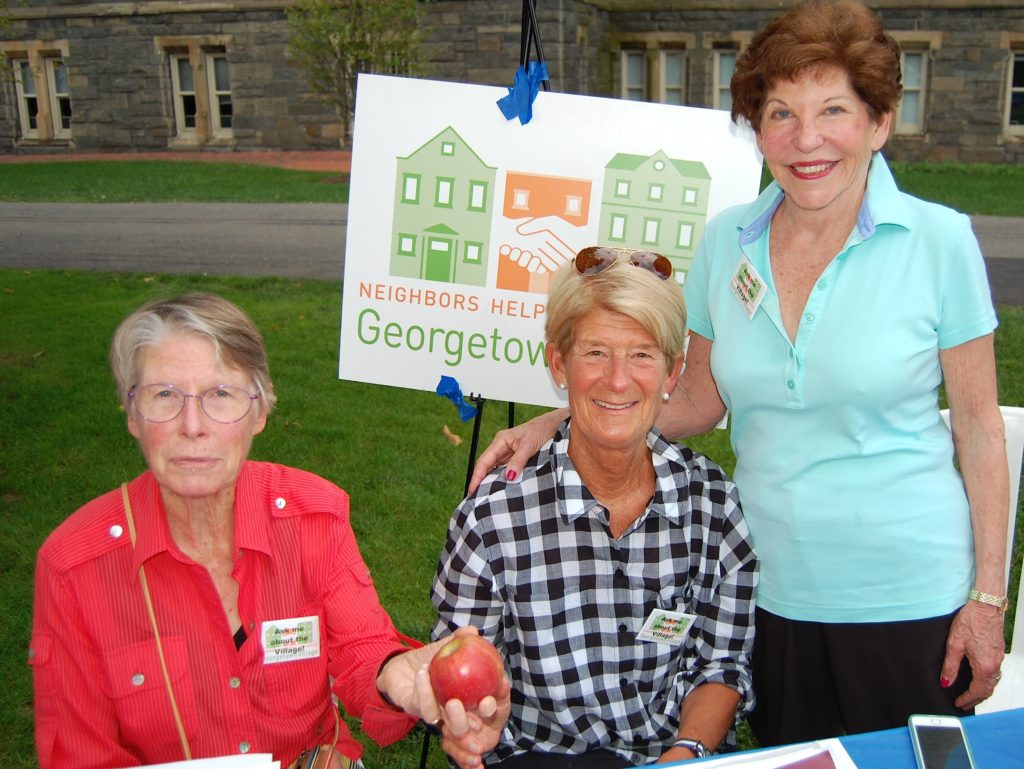Georgetown Village: Aging in Community
By • October 25, 2017 0 976

Anyone over 55 years old who needs help to connect a computer, an iPhone, a television or a smoke alarm, replace a light fixture, clear leaves and snow from the front stoop, get a ride to the supermarket, the pharmacy or the doctor or meet congenial fellow citizens over coffee now has an established, professionally staffed organization to turn to: Georgetown Village.
“Neighbors Helping Neighbors” is the motto, reality and mission of Georgetown Village, launched Dec. 5, 2011, as part of a nationwide movement to allow seniors to “age in place” with the help of neighbors and volunteers of all ages.
“Only we say now ‘age in community,’ because seniors may move from a particular place — a large home to an apartment, say — but still want to live in, be active in, support and be supported by their community,” said Lynn Golub-Rofrano, executive director of Georgetown Village.
With its main office in the Long & Foster building on upper Wisconsin Avenue, directly across from Book Hill, Georgetown Village is nearing 200 members and dozens of volunteers, supporting a steadily increasing number of daily services, weekly programs and monthly get-togethers.
“Look at all the activities just the past two weeks,” said Golub-Rofrano, turning to the large calendar book on her desk. These included a tour to the Smithsonian Craft2Wear Show at the National Building Museum, a book discussion on “The Immortal Life of Henrietta Lacks,” a happy hour, a movie night, a portable-electronics support group, transportation to Trader Joe’s and (the next day) Safeway and a tour of the JFK exhibition at the Smithsonian American Art Museum.
From January to October, Georgetown Village had 489 scheduled services — “more than ever before including IT assistance, handyman, gardening and transportation to medical appointments and grocery stores,” current President Gail Nordheimer wrote. “The GV board regularly weighs which new services might benefit our members.
“Our Health Care Committee members interviewed dozens of assisted living facilities throughout the Washington area to update our database so members and their families can evaluate assisted living facilities when needed,” Nordheimer continued. Georgetown Village also collects and shares member experiences with household service professionals, such as house cleaners, carpenters and chimney specialists.
This year, following volunteer training, medical notetaking was added to the list of “friendly hospital visit” services provided by Georgetown Village. “They are not patient advocates, but trained medical recorders, who will take knowledgeable notes during a GV members’ meeting with a health provider to be clear about what was said and ordered,” explained Golub-Rofrano.
“Among our most popular informational events have been ones on ID theft and Medicare fraud,” she recounted. “The GV is particularly fortunate to have so many local sources for speaker events. For instance, Marty Tolchin, founder of the Hill newspaper, spoke shortly after the election about ‘Trump: What’s Next?’ And recently Bill Plant, the longtime CBS White House correspondent, spoke about his take on civil rights 50 years later.”
In addition to coordinating all the Georgetown activities, Golub-Rofrano also participates every month in various informational and coordination meetings with the more than a dozen other D.C.-area village communities. She also meets during the year with representatives of the more than 100 village communities across the country.
“They come in all forms,” noted Golub-Rofrano. But they all are devoted to “the value of community as we grow older,” the thesis of “Being Mortal’s Village,” a talk by Atul
Gawande, the surgeon and author of “Being Mortal,” featured in a nationwide simulcast in September celebrating 15 years of the village movement.

